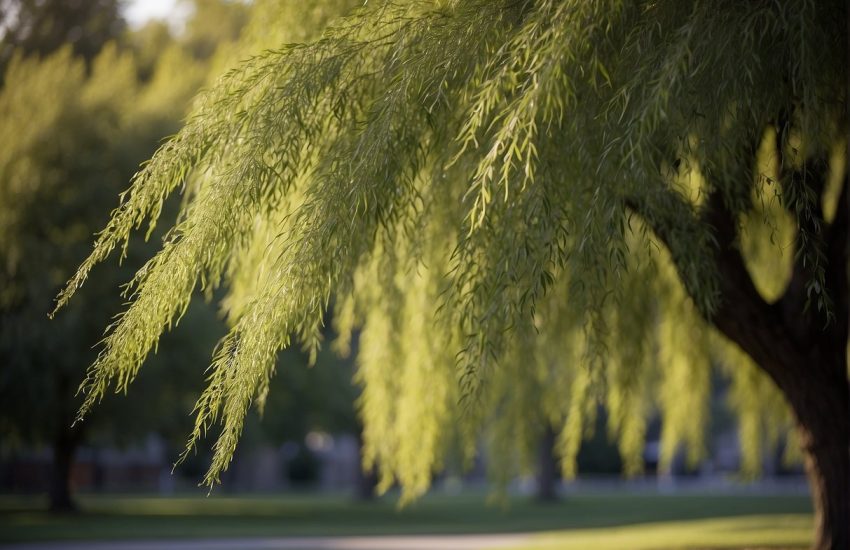Trees That Look Like Olive Trees: A Guide to Identifying Similar Species
Trees that look like olive trees are a great addition to any garden or landscape. Olive trees are known for their beautiful silvery-green leaves and small, fragrant flowers, making them a popular choice for gardeners. However, they may not be suitable for all climates or growing conditions. Fortunately, there are several other trees that have similar characteristics to olive trees and can be a great alternative.

One tree that looks like an olive tree is the Bay Laurel tree. Bay trees are native to the Mediterranean region, just like olive trees, and have similar small, glossy leaves. They can grow up to 20 meters tall and are often cultivated for their aromatic leaves, which are commonly used in cooking, perfumes, and medicines. Another tree that resembles an olive tree is the Ash tree. When immature, Ash trees have small green leaves that grow in clusters of 5 to 9 leaflets, just like olive trees. They can grow up to 120 feet tall when fully mature, making them a great choice for large gardens or landscapes.
Overall, there are several trees that look like olive trees and can be a great alternative for gardeners looking for a similar aesthetic. Whether you choose the Bay Laurel tree or the Ash tree, these trees can add a touch of the Mediterranean to any garden or landscape.
Identifying Trees Similar to Olive Trees

Characteristics of Olive Trees
Olive trees are evergreen trees that can grow up to 50 feet tall. They have a distinctive grayish-green foliage with narrow leaves that are about 2-3 inches long. The bark of an olive tree is gray and smooth when young, but becomes rough and fissured with age.
Common Look-Alikes
There are several trees that resemble olive trees in appearance. One common look-alike is the autumn olive tree (Elaeagnus umbellata). This tree has silver-green foliage with small, oval leaves that are about 1-3 inches long. The bark of an autumn olive tree is gray and smooth with small white or brown dots.
Another tree that looks like an olive tree is the silverberry tree (Elaeagnus commutata). This tree has silvery-green foliage with small, elliptical leaves that are about 1-2 inches long. The bark of a silverberry tree is gray and smooth when young, but becomes rough and fissured with age.
The Russian olive tree (Elaeagnus angustifolia) is also often mistaken for an olive tree. This tree has silvery-green foliage with narrow leaves that are about 2-4 inches long. The bark of a Russian olive tree is gray and smooth when young, but becomes rough and fissured with age.
When identifying trees similar to olive trees, it is important to look at the foliage and bark. While these trees may look similar, their leaves and bark have distinct differences that can help you identify them.
Cultivation and Care

Soil and Watering Requirements
Trees similar to olive trees require well-drained soil that is rich in organic matter. It is important to ensure that the soil is not waterlogged as this can lead to root rot. These trees are drought tolerant and do not require frequent watering. However, it is important to water them deeply during the dry season to ensure that the roots are adequately hydrated.
Pruning and Maintenance
Pruning is an important aspect of caring for trees similar to olive trees. It is recommended to prune them during the winter months when they are dormant. This helps to promote healthy growth and improve the overall appearance of the tree. It is important to remove any dead or diseased branches to prevent the spread of pests and diseases.
Pests and Diseases
Trees similar to olive trees are susceptible to pests and diseases. It is important to monitor them regularly for signs of infestation or infection. Common pests include mites, scale insects, and aphids. These can be controlled using insecticides or by introducing natural predators such as ladybugs. Diseases such as verticillium wilt and root rot can also affect these trees. It is important to ensure that the soil is well-drained and to remove any infected branches to prevent the spread of disease.
In addition to the above, trees similar to olive trees require plenty of sunlight to thrive. It is important to ensure that they are planted in a location that receives at least six hours of direct sunlight per day. With proper care and maintenance, these trees can provide many years of beauty and enjoyment.


